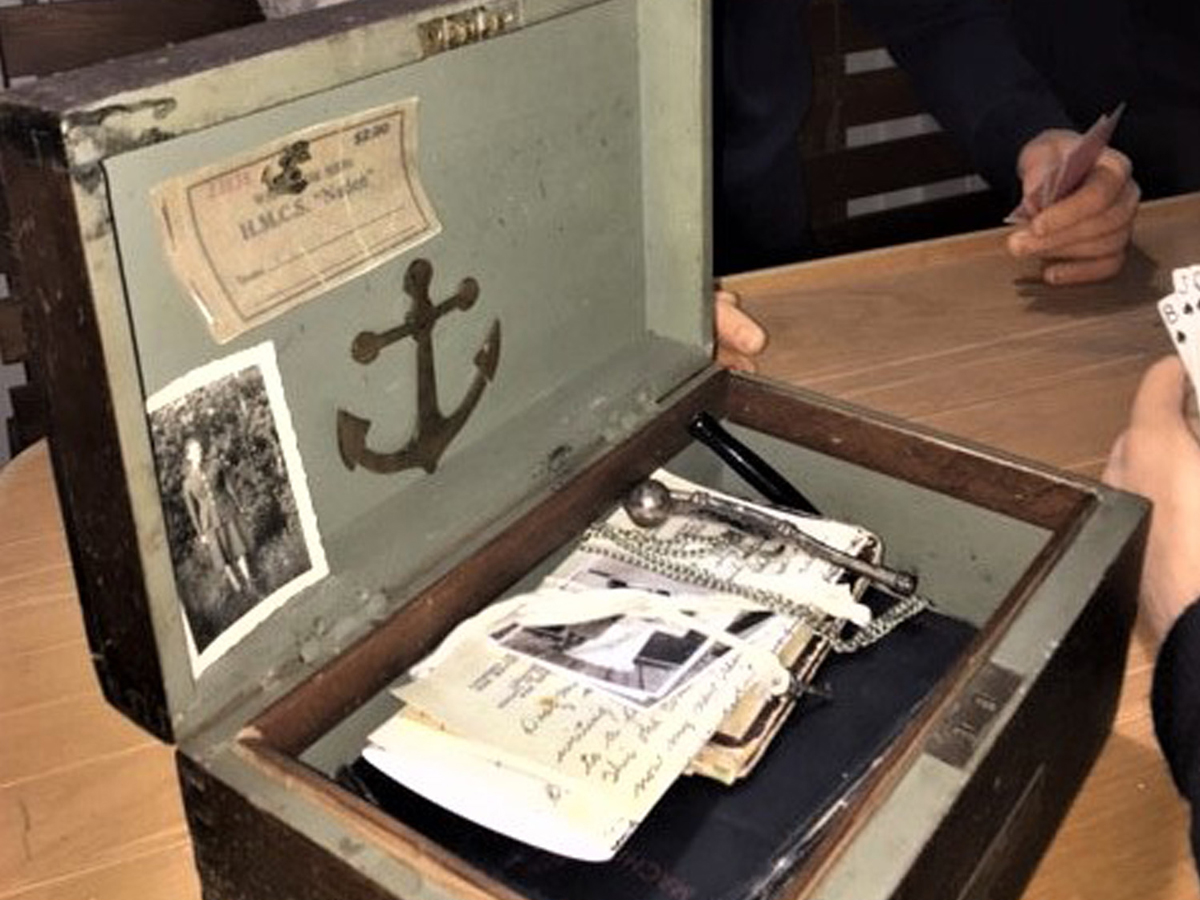A Little Ditty: a personal spin on possessions
By Lookout Production on Jan 28, 2023 with Comments 0
From the Archives: Stories from the CFB Esquimalt Naval and Military Museum
Clare Sharpe,
CFB Esquimalt Naval and Military Museum
—
One of the most prized possession in the belongings of ships’ ratings in years gone was the ditty box.
A ‘ditty box’ (or bag) was a small, usually lockable receptacle every sailor made to store and protect treasures such as letters, photos, and mementoes of loved ones. In addition to holding personal memorabilia, keepsakes and souvenirs, it had practical articles such as sewing supplies and soap. These could also house specialized work tools of the sailor’s trade, such as a bosun’s call (whistle) or a fitting or accessory needed to complete routine shipboard tasks.
The need for such an item likely arose due to the lack of personal space aboard ships, where living was essentially communal, and privacy was at a premium.
A few theories float around about the name. Ditty bags and boxes date as far back as the 1600s, if not earlier, and were made of cotton known as ‘dittis’, thus the name ‘ditty box’. Another theory is from the word ‘ditto’ or ‘the same thing’ as a ditty box held two of everything – two sewing needles, two spools of thread, and so forth. Yet another possibility is that ‘ditto’ was short for either ‘commodity’ or ‘oddity’. Still, another suggestion is that ‘ditty’ has its roots in the ancient term ‘dight’, meaning to clean, repair or make good.
Some containers were round, and others were square; some were plain, while some were decorated. Favourite motifs were diamond shapes, stars, names and initials. Some ditty boxes were embellished with coins, medals, anchors and other paraphernalia carved or burned into the wood, especially on the lid. Wood was the most common material, while whalers sometimes used baleen from the jaws of the prey they hunted.
Whatever the origins or what they were composed of, ditty boxes reflected personalities and interests, and were as unique as the individuals who made them.
To see examples of ditty boxes and how they were used, visit the CFB Esquimalt Naval and Military Museum, open Mon-Sun from 10 am–3:30 pm
www.navalandmilitarymuseum.org
Filed Under: Top Stories
About the Author:






